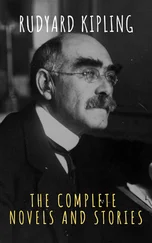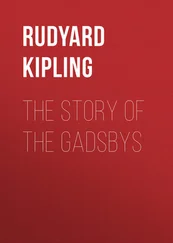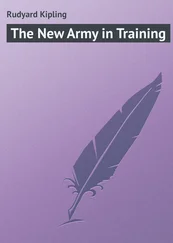Let us get down to the river and see this stamp of men more thoroughly. Clark Russell has told us that their lives are hard enough in all conscience. What are their pleasures and diversions? The Port Office, where live the gentlemen who make improvements in the Port of Calcutta, ought to supply information. It stands large and fair, and built in an orientalised manner after the Italians at the corner of Fairlie Place upon the great Strand Road, and a continual clamour of traffic by land and by sea goes up throughout the day and far into the night against its windows. This is a place to enter more reverently than the Bengal Legislative Council, for it controls the direction of the uncertain Hughli down to the Sandheads; owns enormous wealth; and spends huge sums on the frontaging of river banks, the expansion of jetties, and the manufacture of docks costing two hundred lakhs of rupees. Two million tons of sea-going shippage yearly find their way up and down the river by the guidance of the Port Office, and the men of the Port Office know more than it is good for men to hold in their heads. They can without reference to telegraphic bulletins give the position of all the big steamers, coming up or going down, from the Hughli to the sea, day by day, with their tonnage, the names of their captains and the nature of their cargo. Looking out from the verandah of their office over a lancer-regiment of masts, they can declare truthfully the name of every ship within eyescope, and the day and hour when she will depart.
In a room at the bottom of the building lounge big men, carefully dressed. Now there is a type of face which belongs almost exclusively to Bengal Cavalry officers — majors for choice. Everybody knows the bronzed, black-moustached, clear-speaking Native Cavalry officer. He exists unnaturally in novels, and naturally on the Frontier. These men in the big room have his cast of face so strongly marked that one marvels what officers are doing by the river. ‘Have they come to book passages for home?’ ‘Those men? They’re pilots. Some of them draw between two and three thousand rupees a month. They are responsible for half a million pounds’ worth of cargo sometimes.’ They certainly are men, and they carry themselves as such. They confer together by twos and threes, and appeal frequently to shipping lists.
‘Isn’t a pilot a man who always wears a peajacket and shouts through a speaking-trumpet?’ ‘Well, you can ask those gentlemen if you like. You’ve got your notions from Home pilots. Ours aren’t that kind exactly. They are a picked service, as carefully weeded as the Indian Civil. Some of ’em have brothers in it, and some belong to the old Indian army families.’ But they are not all equally well paid. The Calcutta papers echo the groans of the junior pilots who are not allowed the handling of ships over a certain tonnage. As it is yearly growing cheaper to build one big steamer than two little ones, these juniors are crowded out, and, while the seniors get their thousands, some of the youngsters make at the end of one month exactly thirty rupees. This is a grievance with them; and it seems wellfounded.
In the flats above the pilots’ room are hushed and chapel-like offices, all sumptuously fitted, where Englishmen write and telephone and telegraph, and deft Babus for ever draw maps of the shifting Hughli. Any hope of understanding the work of the Port Commissioners is thoroughly dashed by being taken through the Port maps of a quarter of a century past. Men have played with the Hughli as children play with a gutter-runnel, and, in return, the Hughli once rose and played with men and ships till the Strand Road was littered with the raffle and the carcasses of big ships. There are photos on the walls of the cyclone of ’64, when the Thunder came inland and sat upon an American barque, obstructing all the traffic. Very curious are these photos, and almost impossible to believe. How can a big, strong steamer have her three masts razed to deck-level? How can a heavy country-boat be pitched on to the poop of a high-walled liner? and how can the side be bodily torn out of a ship? The photos say that all these things are possible, and men aver that a cyclone may come again and scatter the craft like chaff. Outside the Port Office are the export and import sheds, buildings that can hold a ship’s cargo apiece, all standing on reclaimed ground. Here be several strong smells, a mass of railway lines, and a multitude of men. ‘Do you see where that trolly is standing, behind the big P. and O. berth? In that place as nearly as may be the Govindpur went down about twenty years ago, and began to shift out! ‘But that is solid ground.’ ‘She sank there, and the next tide made a scour-hole on one side of her. The returning tide knocked her into it. Then the mud made up behind her. Next tide the business was repeated — always the scour-hole in the mud and the filling up behind her. So she rolled, and was pushed out and out until she got in the way of the shipping right out yonder, and we had to blow her up. When a ship sinks in mud or quicksand she regularly digs her own grave and wriggles herself into it deeper and deeper till she reaches moderately solid stuff. Then she sticks.’ Horrible idea, is it not, to go down and down with each tide into the foul Hughli mud?
Close to the Port Offices is the Shipping Office, where the captains engage their crews. The men must produce their discharges from their last ships in the presence of the shipping master, or, as they call him, ‘The Deputy Shipping.’ He passes them after having satisfied himself that they are not deserters from other ships, and they then sign articles for the voyage. This is the ceremony, beginning with the ‘dearly beloved’ of the crew-hunting captain down to the ‘amazement’ of the deserter. There is a dingy building, next door to the Sailors’ Home, at whose gate the cast-ups of all the seas stand in all manner of raiment. There are the Seedee boys, Bombay serangs and Madras fishermen of the salt villages; Malays who insist upon marrying Calcutta women, grow jealous and run amok ; Malay-Hindus, Hindu-Malay-whites, Burmese, Burma-whites, Burma-native-whites; Italians with gold ear-rings and a thirst for gambling; Yankees of all the States, with Mulattoes and pure buck-niggers; red and rough Danes, Cingalese, Cornish boys fresh taken from the plough-tail, ‘corn-stalks’ from colonial ships where they got four pound ten a month as seamen; tun-bellied Germans, Cockney mates keeping a little aloof from the crowd and talking in knots together; unmistakable ‘Tommies’ who have tumbled into seafaring life by some mistake; cockatoo-tufted Welshmen spitting and swearing like cats; brokendown loafers, grey-headed, penniless and pitiful, swaggering boys, and very quiet men with gashes and cuts on their faces. It is an ethnological museum where all the specimens are playing comedies and tragedies. The head of it all is the ‘Deputy Shipping,’ and he sits, supported by an English policeman whose fists are knobby, in a great Chair of State. The ‘Deputy Shipping’ knows all the iniquity of the river-side, all the ships, all the captains, and a fair amount of the men. He is fenced off from the crowd by a strong wooden railing behind which are gathered the unemployed of the mercantile marine. They have had their spree — poor devils! — and now they will go to sea again on as low a wage as three pound ten a month, to fetch up at the end in some Shanghai stew or San Francisco hell. They have turned their backs on the seductions of the Howrah boarding-houses and the delights of Colootollah. If Fate will, ‘Nightingale’s’ will know them no more for a season. But what skipper will take some of these battered, shattered wrecks whose hands shake and whose eyes are red?
Enter suddenly a bearded captain, who has made his selection from the crowd on a previous day, and now wants to get his men passed. He is not fastidious in his choice. His eleven seem a tough lot for such a mild-eyed, civil-spoken man to manage. But the captain in the Shipping Office and the captain on his ship are two different things. He brings his crew up to the ‘Deputy Shipping’s’ bar, and hands in their greasy, tattered discharges. But the heart of the ‘Deputy Shipping’ is hot within him, because, two days ago, a Howrah crimp stole a whole crew from a down-dropping ship, insomuch that the captain had to come back and whip up a new crew at one o’clock in the day. Evil will it be if the ‘Deputy Shipping’ finds one of these bounty jumpers in the chosen crew of the Blenkindoon .
Читать дальше












